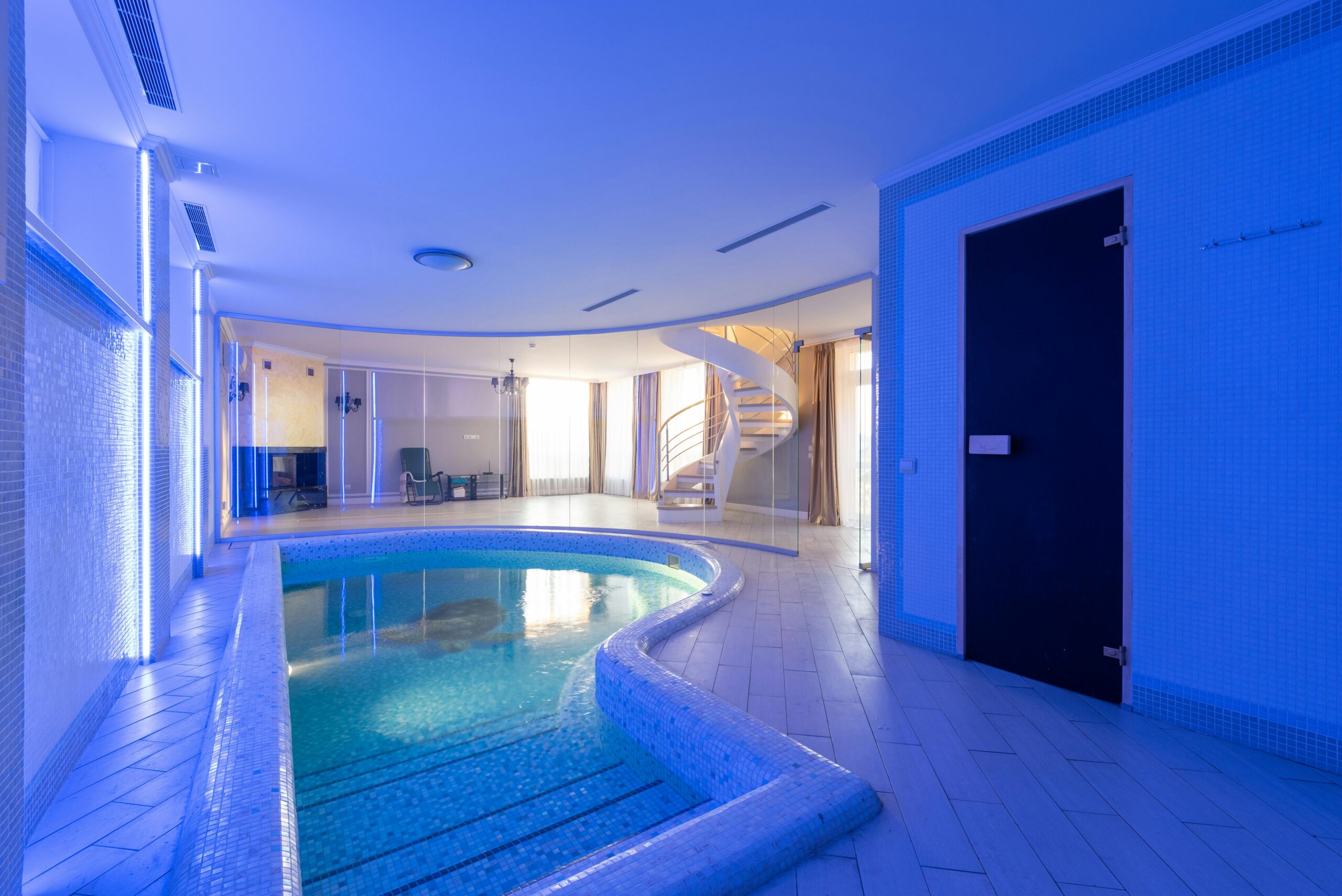House with Indoor Swimming Pool

A swimming pool is a dream of most homeowners. It unites wealth, convenience, and health in a single package. Unlike outdoor pools, the indoor ones are usable throughout the year, with the added advantage of privacy as opposed to outdoor pools, which has motivated their adoption by contemporary homeowners.
This guide will take you through all the information you need to know – design ideas, advantages, costs, maintenance, and frequently asked questions.
Why Choose a House with an Indoor Swimming Pool?
A swimming pool indoors can be used not only for luxurious purposes:
- Year-Round Serviceable Use: Swim at any time, whether it is stormy or sunny.
- Privacy: You will be able to swim without being reached by the outside world
- Health Benefits: Swimming exercises every day lowers stress and increases fitness.
- Home Value: Increases status and increases the value of the property.
- Entertainment: This is ideal for entertaining friends and family.
Types of Indoor Swimming Pool Houses
Indoor pools are also incorporated into different homes in different ways.
1. Luxury Mansions with Indoor Pools
- Large waters that can entertain kids with spa amenities, a waterfall, or lighting.
- Up-to-date finishing, such as marble, glass walls, and heated floors.
2. Modern Minimalist Houses
- Vertimolds with succinct pools.
- Best suited for homes in the city where space may be small.
3. Family Homes with Indoor Pool
- Family-friendly pool dimensions.
- Touches of safety, such as slip-resistant floors.

Key Considerations Before Building
These are what you need to consider before settling on a house with an indoor swimming pool:
1. Space Requirements
- Small pools: 10-15 feet long and used as an exercise or relaxing place.
- Medium pools: 2030 feet long, to be used by the families.
- Oversized pools: 40+ feet long, they are appropriate in luxury homes.
2. Ventilation / Humidity
- Controlling indoor pools causes humidity.
- It is very important to have proper ventilation to eliminate mold, condensation, and structural damage.
3. Heating & Lighting
- Heated pools can make swimming comfortable all year long.
- Lighting through natural or LED makes it prettier and convenient.
4. Safety & Privacy
Install safety alarms, anti-slip floors, and child locks in case you have children.
Cost of a House with an Indoor Swimming Pool
Indoor pools cost more than outdoor pools due to construction and climate control needs.
Here’s a quick comparison table:
| Feature | Indoor Pool | Outdoor Pool |
| Initial Cost | $40,000 – $200,000+ | $25,000 – $100,000+ |
| Maintenance | Higher (ventilation, heating) | Moderate (cleaning, chemicals) |
| Usability | Year-round | Seasonal (depends on climate) |
| Privacy | High | Low to Medium |
| Property Value | Increases significantly | Moderate increase |
Steps to Building a House with an Indoor Pool
What to expect in the case of building:
Step 1: Plan & Design
- Determine the size and positioning of pools.
- Get an architect to incorporate it into the house design.
Step 2: Budgeting
- Provide money to build, ventilate, heat, and finish.
- Write 10-15 percent more in case of any contingencies.
Step 3: Hire Professionals
- Select licensed pool builders and contractors.
- See to it that they focus on indoor swimming pool construction.
Step 4: Construction & Installation
- TM testing, excavation, and construction of the structure.
- Installation of heating, filtration, and ventilation systems.
Step 5: Finishing Touches
- Install tiles, illumination, and safety.
- Think of luxury amenities, such as spas, saunas, or waterfalls.

Maintenance Tips for Indoor Pools
- Weekly Cleaning: Weekly vacuum and skim the pool.
- Chemical Balance: Test chlorine and pH.
- Ventilation: make use of dehumidifiers and adequate exhaust systems.
- Conservation of energy: Utilize pool covers and a heating timer.
- Professional Checkups: Book the clients for an annual checkup.
Advantages vs. Disadvantages
| Advantages | Disadvantages |
| Year-round swimming | Higher construction cost |
| Increased home value | Expensive maintenance |
| Complete privacy | Requires more space |
| Safe from outdoor dirt/debris | Humidity & ventilation challenges |
| Great for fitness & family fun | Higher energy bills |
Design Ideas for Indoor Swimming Pools
- Glass-Walled Pools: Let in light.
- Infinity-style indoor pools give an impression of luxury.
- Swimming Pools Below the ground: Make use of a basement – Ankle-deep swimming pools are possible.
- Indoor-Outdoor Combo: The ease of using sliding glass doors.
- Spa-Inspired Pools: They have hot tubs, jets, and waterfalls.

FAQs About Houses with Indoor Swimming Pools
Does an in-house pool increase the value of a house?
Indoor pools may greatly add property value to your property, particularly in high-end real estate zones.
How can I estimate the cost of maintaining an indoor swimming pool?
You can expect to spend approximately between $3,000 and $5,000 a year, depending on the head requirements, such as heating, ventilation, and cleaning requirements.
Is it possible to install an indoor pool in an existing house?
However, it must have proper space, structural modification, and ventilation.
Are indoor pools energy-wise?
They may, especially when well insulated, covered, and heated with energy-conserving furnaces.
What is the optimum measure of an interior swimming pool?
The size of a 20-30-foot-long pool is best suited to family use. To be luxurious and fit, bigger sizes are required.
Conclusion
An indoor swimming pool is the best blend of luxury, wellness, and long-term value of a house. Though it involves a bigger up-front investment and therefore demands delicate maintenance, the advantages are tremendous: pizza swimming in summer and winter, privacy, and added value to the property.
If you are on the verge of constructing one, think it through, use the services of professionals, and pay attention to airflow and energy efficiency. Through the appropriate steps, you can materialise your dream of a home with a swimming pool.

